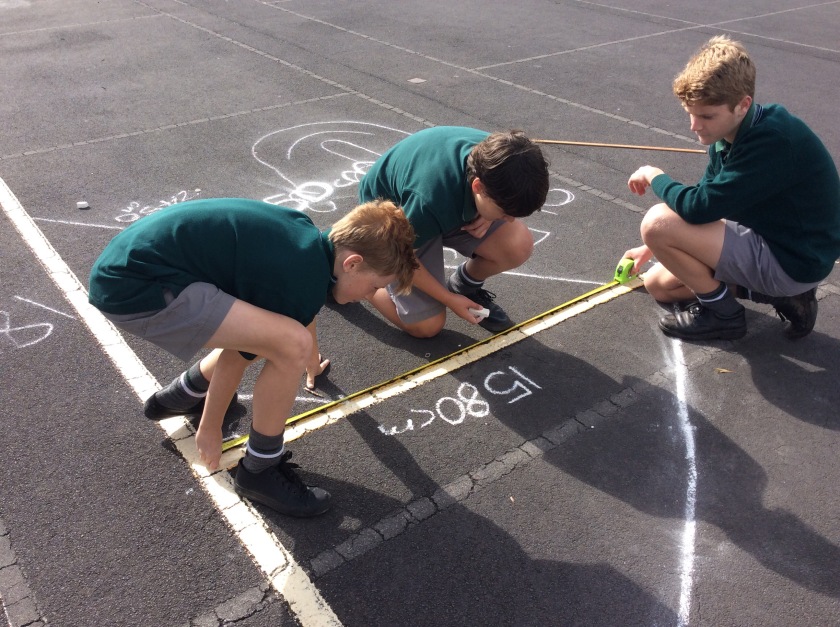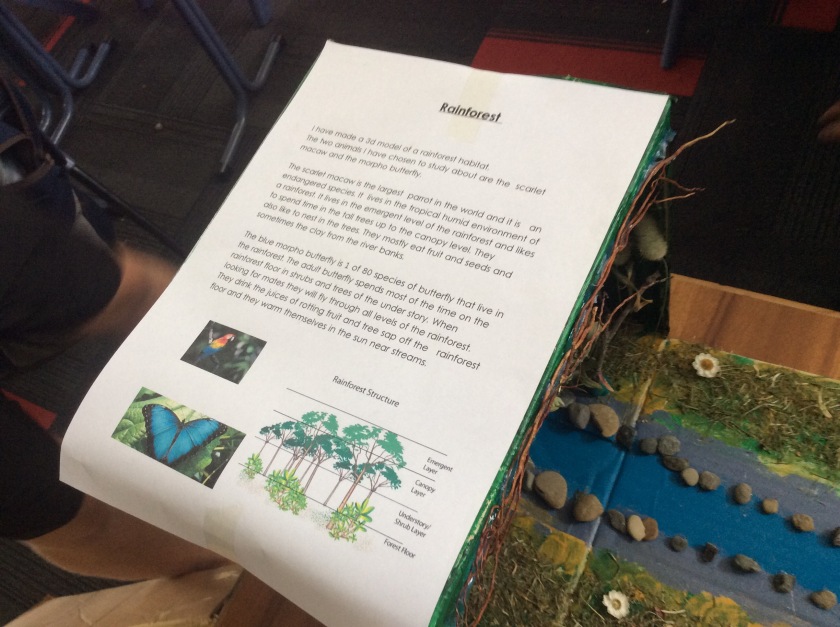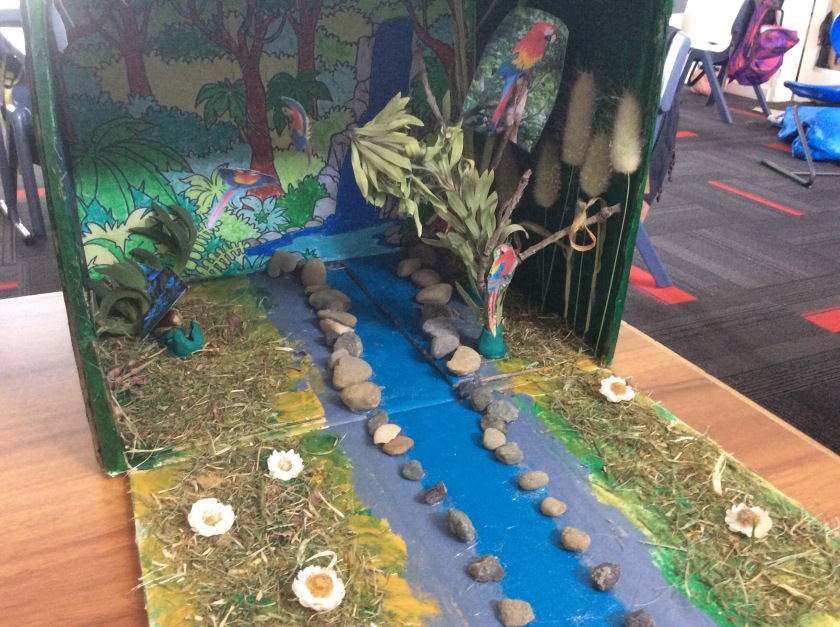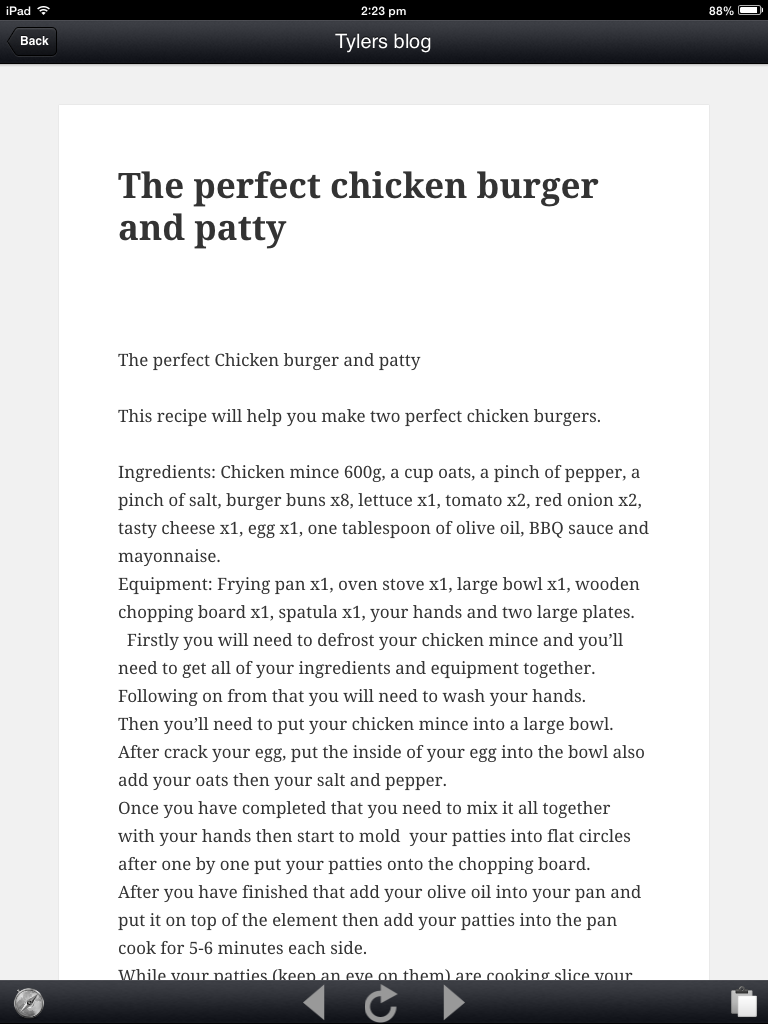After recent PD with Kath Murdoch I really wanted to try and find ways to make Maths an Inquiry. Also the key to this is for the chn to develop skills in constructing their own learning pathway and make choices about constructing knowledge.
We started with a brainstorm about what knowledge we require in Measurement. Then we talked about what evidence they could provide to show they understood these things. This technique is call split screening which in our language of learning has learning intentions on the left (hopefully a question) with what we have to find out. And on the right is how or what evidence the learner can provide to demonstrate knowledge and understanding in their own context.
It took a while to explain this new process but found it very powerful and the student agency was very high. I also made time to talk to them 1:1 to make sure they knew what they were doing and how they.
Here is a photo of the original process

My colleague Heather Wigg observed the process and shared what she saw. Here is her words
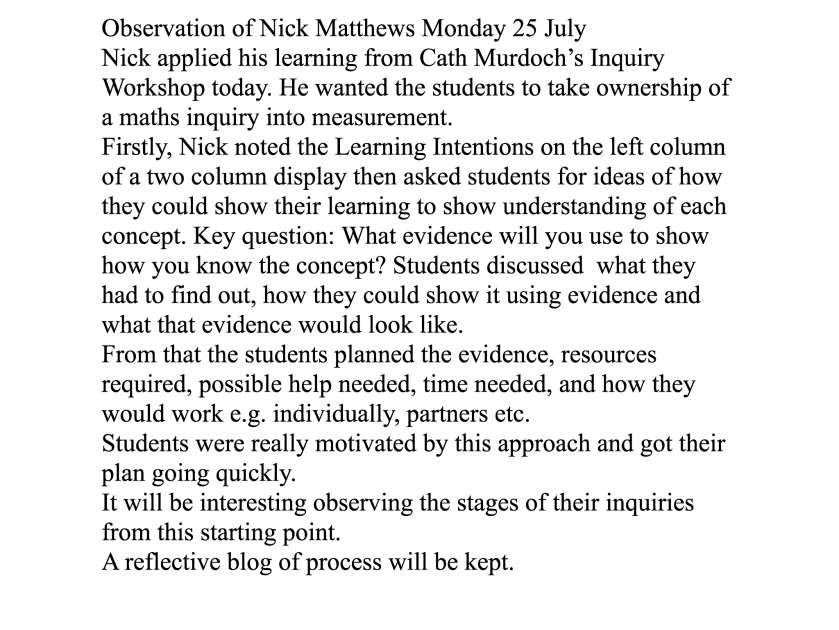 After we planned or tasks or evidence they set about constructing a plan and evidence of learning. Some learners went outside on the courts and did some practical tasks and took photos here they are working together actually Measuring with no text books in sight- how enlightening
After we planned or tasks or evidence they set about constructing a plan and evidence of learning. Some learners went outside on the courts and did some practical tasks and took photos here they are working together actually Measuring with no text books in sight- how enlightening
T3- Measurement and Geometry
All Maths now carried out as Inquiry with chn planning tasks from an initial brainstorm. Each learner books in a time to show how they are gathering evidence of learning
Maths as Inquiry 2017
We started by brainstorming the purpose of Number and Algebra and all the things we needed to find out about. We started with the four operations and using them with fractions, whole numbers and decimals. Each student then went through the presentation as revision to find out what things to work on and planned how they would present info so they would remember it. All students are engaged and on task and quite a bit of variation from using keynotes to imovies or kahoots to test each other on concepts. They provided evidence of learning by taking screenshots of maths concepts they are working on. Most working in pairs or 3s and finding videos off websites to clarify if challenged by concepts. Feedback is positive and lots of collaborative discussion between all students and Y7s and Y8s. 

